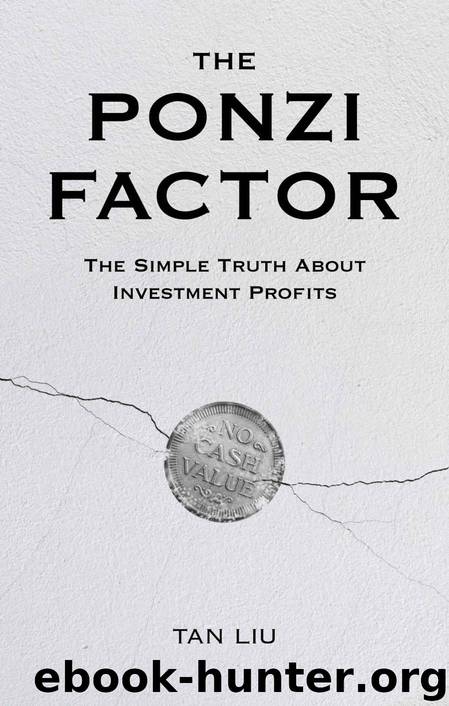The Ponzi Factor: The Simple Truth About Investment Profits by Tan Liu

Author:Tan Liu [Liu, Tan]
Language: eng
Format: azw3
Publisher: QuantStyle Publishing
Published: 2018-02-11T05:00:00+00:00
The Published Academic Ideas in finance are usually in the form of models, which are essentially elaborate calculators that don’t prove anything factual but illustrate data points. A famous one used for pricing options is the Black-Scholes (BS) model. Two of the authors, Myron Scholes and Robert C. Merton, were even awarded a Nobel Prize for their work.
The BS model was designed to help determine the price of derivative contracts called options—which are like side bets for stocks. As you can imagine, an instrument that prices options can be useful if you are an options trader on Wall Street. The research that went into constructing the model will also look meaningful if you’re a finance academic that thinks: The stock market is a complex system, and options are complicated instruments. It’s important to develop models to illustrate the data and help everyone gain a better understanding of how the markets work.
This sounds reasonable, which is why our universities love this type of research. But let’s take a step back, look at the big picture, and examine the fundamentals of why options even exist. Does the BS model and its application for pricing options add any value to the real world if the stock market isn’t even positive-sum, to begin with?
The only reason option contracts exist is because investors buy stocks. But the only reason investors buy stocks is because they believe the stock market is positive-sum and they will get back more money than they put in. But if the stock market is zero or negative-sum, then investors wouldn’t be buying stocks. And if investors don’t buy stocks, then there wouldn’t be a need for options contracts either. And if no one is playing with options, the Nobel Prize-winning BS model that those brilliant mathematicians worked so hard on is essentially worthless.
The positive-sum assumption is the foundation of every financial idea and innovation. If the stock market is not positive-sum, then the instruments and research developed for the market and its derivatives, including textbooks and university courses, are essentially worthless.
We can use mathematical theorems to create an elegant-looking quantitative model for any casino game and diversify our bets in almost an infinite number of ways for a game like roulette. However, such models and tools have no value for the player, or the greater world if the game is not even positive-sum, to begin with.
There is a difference between modeling the behavior of a financial instrument and assuming that such instruments or research are creating something of value for society. Financial models and innovations might serve a purpose on Wall Street because they are designed around the artificial rules and games people on Wall Street play. But they have little, if any purpose at all, in the real world we live in.
The published works in math and physics have helped advance our understanding of technology and medicine with tangible results. The published works in finance are developed to help the industry shuffle other people’s money and collect fees, at best, or create economic disasters, at worst.
Download
This site does not store any files on its server. We only index and link to content provided by other sites. Please contact the content providers to delete copyright contents if any and email us, we'll remove relevant links or contents immediately.
International Integration of the Brazilian Economy by Elias C. Grivoyannis(75613)
The Radium Girls by Kate Moore(11634)
Turbulence by E. J. Noyes(7717)
Nudge - Improving Decisions about Health, Wealth, and Happiness by Thaler Sunstein(7261)
The Black Swan by Nassim Nicholas Taleb(6782)
Rich Dad Poor Dad by Robert T. Kiyosaki(6191)
Pioneering Portfolio Management by David F. Swensen(6089)
Man-made Catastrophes and Risk Information Concealment by Dmitry Chernov & Didier Sornette(5669)
Zero to One by Peter Thiel(5503)
Secrecy World by Jake Bernstein(4402)
Millionaire: The Philanderer, Gambler, and Duelist Who Invented Modern Finance by Janet Gleeson(4113)
The Age of Surveillance Capitalism by Shoshana Zuboff(3999)
Skin in the Game by Nassim Nicholas Taleb(3978)
The Money Culture by Michael Lewis(3857)
Bullshit Jobs by David Graeber(3843)
Skin in the Game: Hidden Asymmetries in Daily Life by Nassim Nicholas Taleb(3736)
The Dhandho Investor by Mohnish Pabrai(3572)
The Wisdom of Finance by Mihir Desai(3538)
Blockchain Basics by Daniel Drescher(3339)
